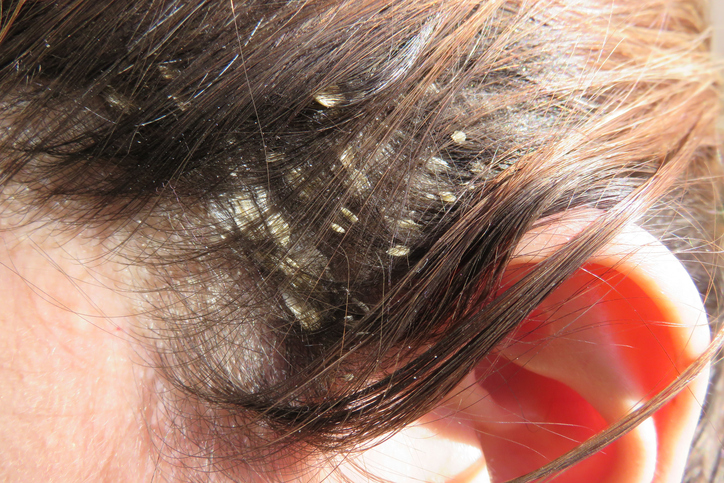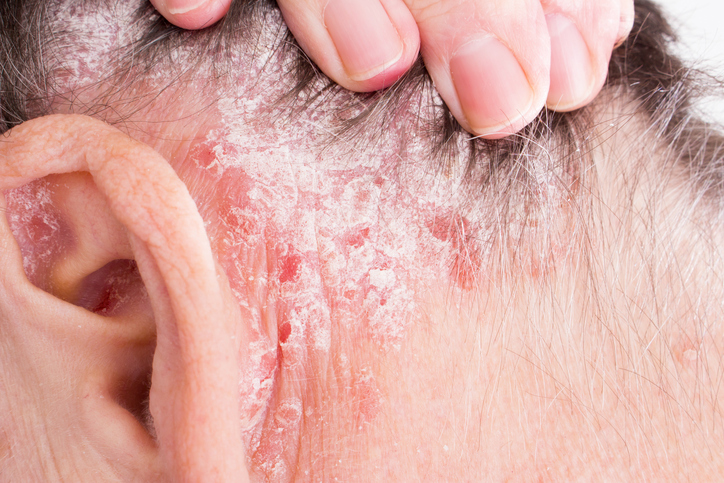- Tucker D, Masood S (August 2021). "Seborrheic Dermatitis". StatPearls [Internet]. Treasure Island (FL): StatPearls Publishing. PMID 31869171.
- "Dandruff". nhs.uk. 18 October 2017. Retrieved 1 January 2020.
- "Patient education: Seborrheic dermatitis (including dandruff and cradle cap) (Beyond the Basics)". www.uptodate.com. Retrieved 1 January 2020.
- Grimalt R (December 2007). "A practical guide to scalp disorders". The Journal of Investigative Dermatology. Symposium Proceedings. 12 (2): 10–14. doi:10.1038/sj.jidsymp.5650048. PMID 18004290.
- Ranganathan S, Mukhopadhyay T (2010). "Dandruff: the most commercially exploited skin disease". Indian Journal of Dermatology. 55 (2): 130–134. doi:10.4103/0019-5154.62734. PMC 2887514. PMID 20606879.
- "Dandruff: How to treat". American Academy of Dermatology. Archived from the original on 21 October 2017. Retrieved 20 October 2017.
- Turkington C, Dover JS (2007). The Encyclopedia of Skin and Skin Disorders (Third ed.). Facts On File, Inc. p. 100. ISBN 978-0-8160-6403-8. Archived from the original on 19 May 2016.
- Turner GA, Hoptroff M, Harding CR (August 2012). "Stratum corneum dysfunction in dandruff". International Journal of Cosmetic Science. 34 (4): 298–306. doi:10.1111/j.1468-2494.2012.00723.x. PMC 3494381. PMID 22515370.
- "What Is Dandruff? Learn All About Dandruff". Medical News Today. Archived from the original on 10 August 2015.
- DeAngelis YM, Gemmer CM, Kaczvinsky JR, Kenneally DC, Schwartz JR, Dawson TL (December 2005). "Three etiologic facets of dandruff and seborrheic dermatitis: Malassezia fungi, sebaceous lipids, and individual sensitivity". The Journal of Investigative Dermatology. Symposium Proceedings. 10 (3): 295–297. doi:10.1111/j.1087-0024.2005.10119.x. PMID 16382685.
- Ro BI, Dawson TL (December 2005). "The role of sebaceous gland activity and scalp microfloral metabolism in the etiology of seborrheic dermatitis and dandruff". The Journal of Investigative Dermatology. Symposium Proceedings. 10 (3): 194–197. doi:10.1111/j.1087-0024.2005.10104.x. PMID 16382662.
- Ashbee HR, Evans EG (January 2002). "Immunology of diseases associated with Malassezia species". Clinical Microbiology Reviews. 15 (1): 21–57. doi:10.1128/CMR.15.1.21-57.2002. PMC 118058. PMID 11781265.
- Batra R, Boekhout T, Guého E, Cabañes FJ, Dawson TL, Gupta AK (December 2005). "Malassezia Baillon, emerging clinical yeasts". FEMS Yeast Research. 5 (12): 1101–1113. doi:10.1016/j.femsyr.2005.05.006. PMID 16084129.
- Dawson TL (2006). "Malassezia and seborrheic dermatitis: etiology and treatment". Journal of Cosmetic Science. 57 (2): 181–182.
Dandruff: Why does it appear, how to get rid of it? (will granny's advice and home treatment help?)

Photo source: Getty images
Most common symptoms
Show more symptoms ᐯ
Dandruff treatment: medication, vitamins and the right shampoo
Show more












